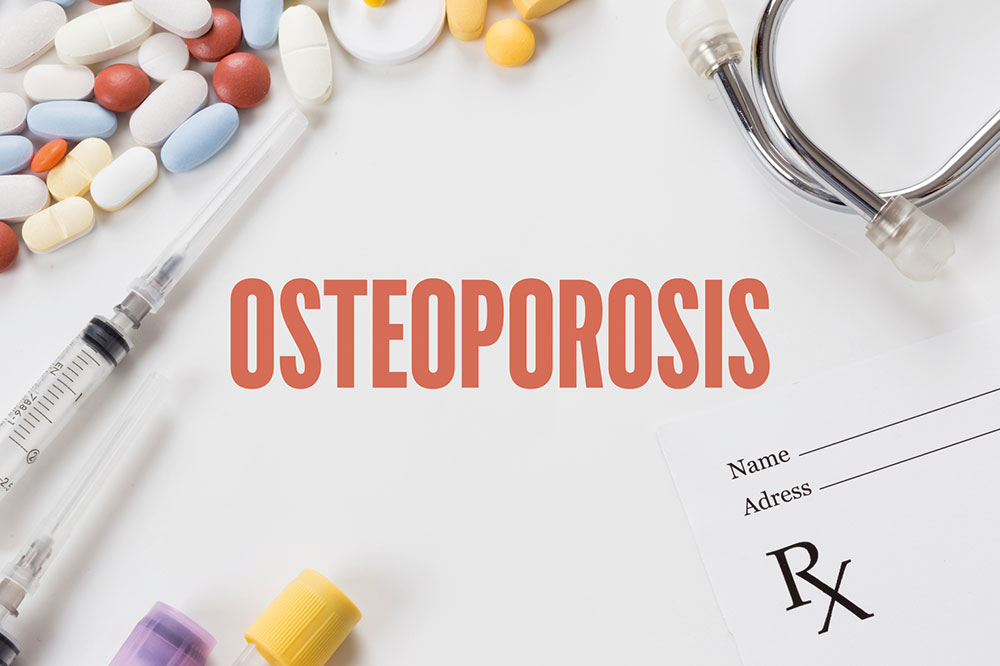7 Conditions That Increase the Risk of Osteoporosis

Osteoporosis can make the bones weak and brittle. Sometimes, the bones are so brittle that mild stress or a fall like coughing or bending over might result in a fracture. Typically, osteoporosis-related fractures occur in the spine, wrist, and hip. Bone is a living tissue that constantly breaks and replaces itself. Osteoporosis occurs when the new bone creation fails to keep up with the loss of old bone. There can be different causes of osteoporosis, but some health conditions increase the risk.
Inflammatory bowel disease
Several studies reveal that patients with inflammatory bowel disease (IBD), predominantly Crohn’s disease, are more susceptible to developing osteopenia and osteoporosis. Studies suggest that osteoporosis might occur in every one in seven people with Crohn’s Disease. However, there is no one specific reason for IBB being responsible for osteoporosis. But some plausible explanations include:
- Prednisone, a corticosteroid for IBD treatment, impacts bone metabolism. In only a few months of consumption, it decreases bone density and heightens the susceptibility to fracture. Sadly, even low prednisone dosage can increase the risk of fractures.
- Alternative options like methotrexate and cyclosporine can also lower bone density.
- Crohn’s disease, or IBD, is a known risk factor for osteoporosis. Many newly diagnosed patients showed low bone densities even before they started corticosteroids. Researchers believe that the increased circulatory inflammatory cytokines hamper bone resorption and formation.
- Patients with IBD have a low body mass index, which aggravates the osteoporosis risk.
- Some IBD patients have a history of small bowel resections or movement. Hence, vitamin D or calcium absorption might be inadequate.
Diabetes mellitus
Unfortunately, scientists fail to understand the reasons behind lower bone density in people with Type 1 diabetes. However, studies suggest that those with this type of diabetes have lower-than-normal bone formation and bone turnover. A plausible reason for its association with osteoporosis is that high blood sugar might shut down bone formation. Moreover, people develop type 1 diabetes in their childhood. It is the time when the body is still building bones. Hence, those with Type 1 diabetes might never get a chance to acquire their peak bone density. At times their bone mass might not be significantly lower than normal, but still, people with type 1 and type 2 diabetes have a greater susceptibility to developing fractures than others.
Autoimmune disorders
Three million adults in the country have rheumatoid arthritis or lupus. They are both autoimmune conditions. In such diseases, circulating chronic inflammatory factors amplify inflammation in the body. A chronic inflammatory disease aggravates the osteoporosis risk as it heightens the bone turnover rate, wherein old bone gets replaced by healthy bone.
In addition, people with autoimmune disorders take corticosteroids for an extended duration to lower the inflammation and keep symptoms in check. Long-term corticosteroid intake weakens the bone by reducing the functioning of cells responsible for bone-building. Moreover, patients are less active since the disease inflicts pain and impairs movement. It further weakens the bones.
Lupus is predominantly common in women between 15 and 45, mainly during the peak bone-building years. Anything that hampers bone growth during these years aggravates the osteoporosis risk. Thus, discuss your risk with the doctor when you have an autoimmune disorder.
Celiac disease
People with celiac disease include foods that have gluten and protein. It can damage the villi, a threadlike projection that lines the small intestine. Consequently, the nutrients in the food do not get adequately absorbed, also known as malabsorption. Some nutrients that are not absorbed are vitamin D, calcium, and vitamin K. These are essential for healthy bone development. Hence, low bone density is prevalent in adults and children with celiac. The risk is even more common in people whose disease was not diagnosed until adulthood as they went longer without calcium and other nutrient absorption necessary for healthy bones.
Moreover, the connection between osteoporosis and celiac disease is so potent that researchers recommend everyone who developed osteoporosis at a young age get tested for celiac disease to assess whether malabsorption is the reason for low bone density. At times, osteoporosis diagnosed after you break a bone indicates celiac disease because it does not always produce apparent symptoms. In addition, researchers also recommend seniors with osteoporosis get examined for celiac disease if they do not respond to the treatment.
Asthma
Asthma does not directly aggravate the risk of developing osteoporosis, but the treatments for the breathing condition might increase the susceptibility to osteoporosis. In the country, around twenty million people have asthma, including nine million children below eighteen.
Usually, people with asthma employ corticosteroids like asthma inhalers to keep the disease in check. Further, you might be advised to take prednisone for a short duration during an asthma attack. They help relieve asthma symptoms like wheezing and breathlessness but might simultaneously result in bone loss, a risk factor for osteoporosis.
Moreover, people with asthma cannot partake in many activities, thus the risk of osteoporosis aggravates.
Hyperthyroidism
It is a condition wherein the thyroid gland releases excessive thyroid hormone. It can result in fragile bones and weak muscles. Simultaneously, it might also lead to another lesser-known condition called hyperparathyroidism. Four small parathyroid glands sit behind the thyroid glands in the neck. They are responsible for producing a parathyroid hormone that regulates the calcium levels in the blood. When they are overreactive, the body starts drawing calcium from the bones. It results in bone loss. For diagnosis, you can undergo a routine blood test. If it indicates high calcium levels, it might be a sign of the condition. However, it might also cause other symptoms like fatigue, kidney stones, depression, and irritability. After the hyperactive gland is in-check, bones can repair some parts of the damage.
Eating disorders
People with anorexia have low estrogen levels, resulting in bone loss, like in postmenopausal women. Moreover, bulimia and anorexia can curtail the degree of nutrients absorbed in the blood and delivered to the bones.









